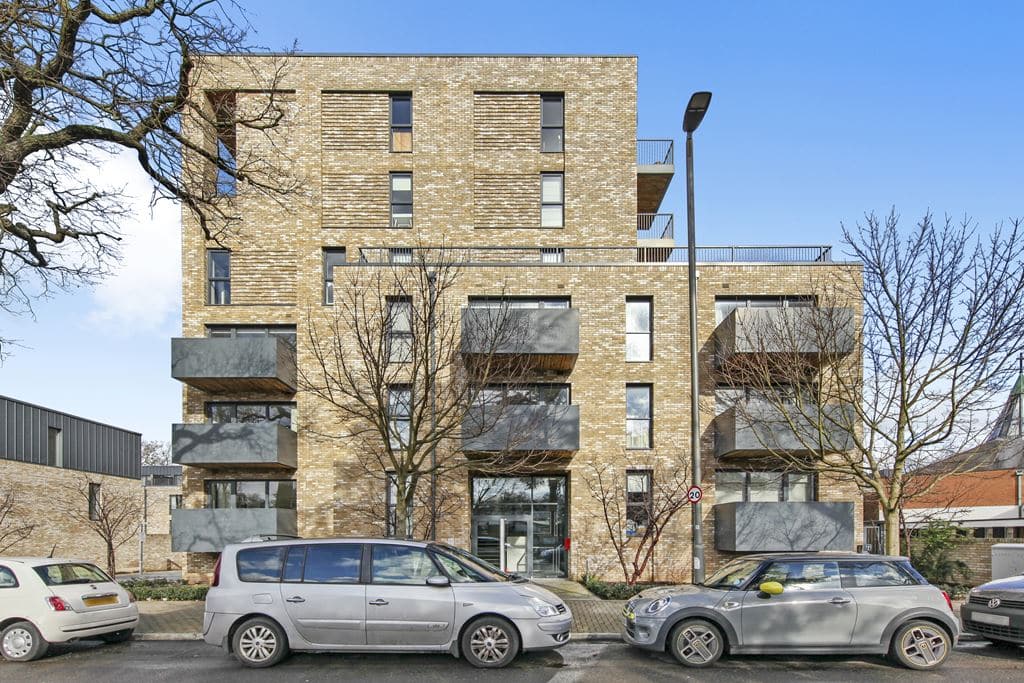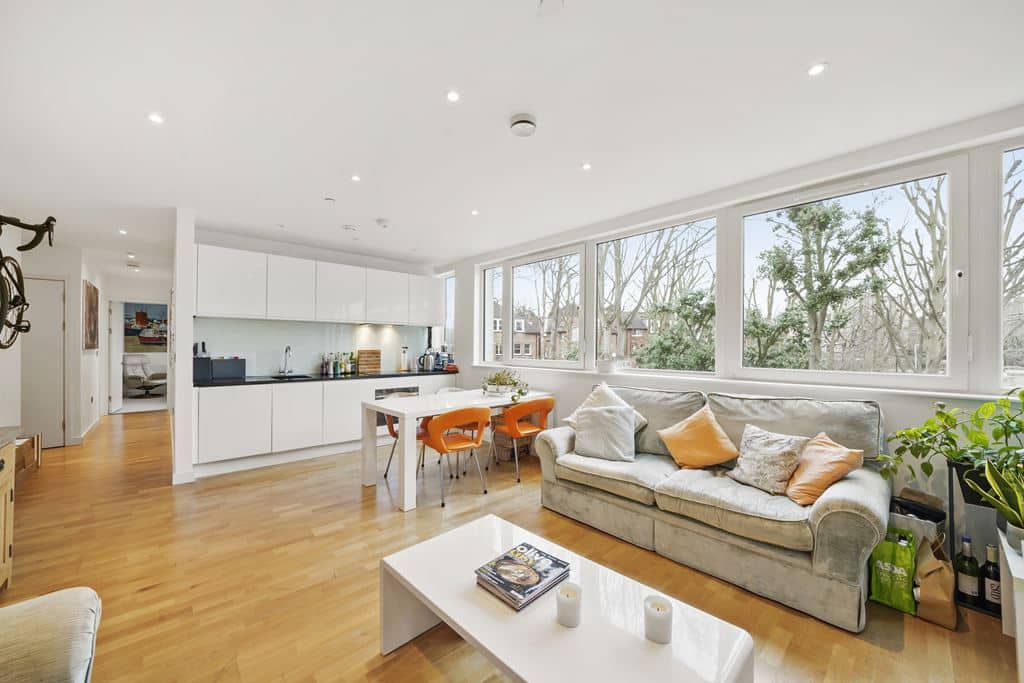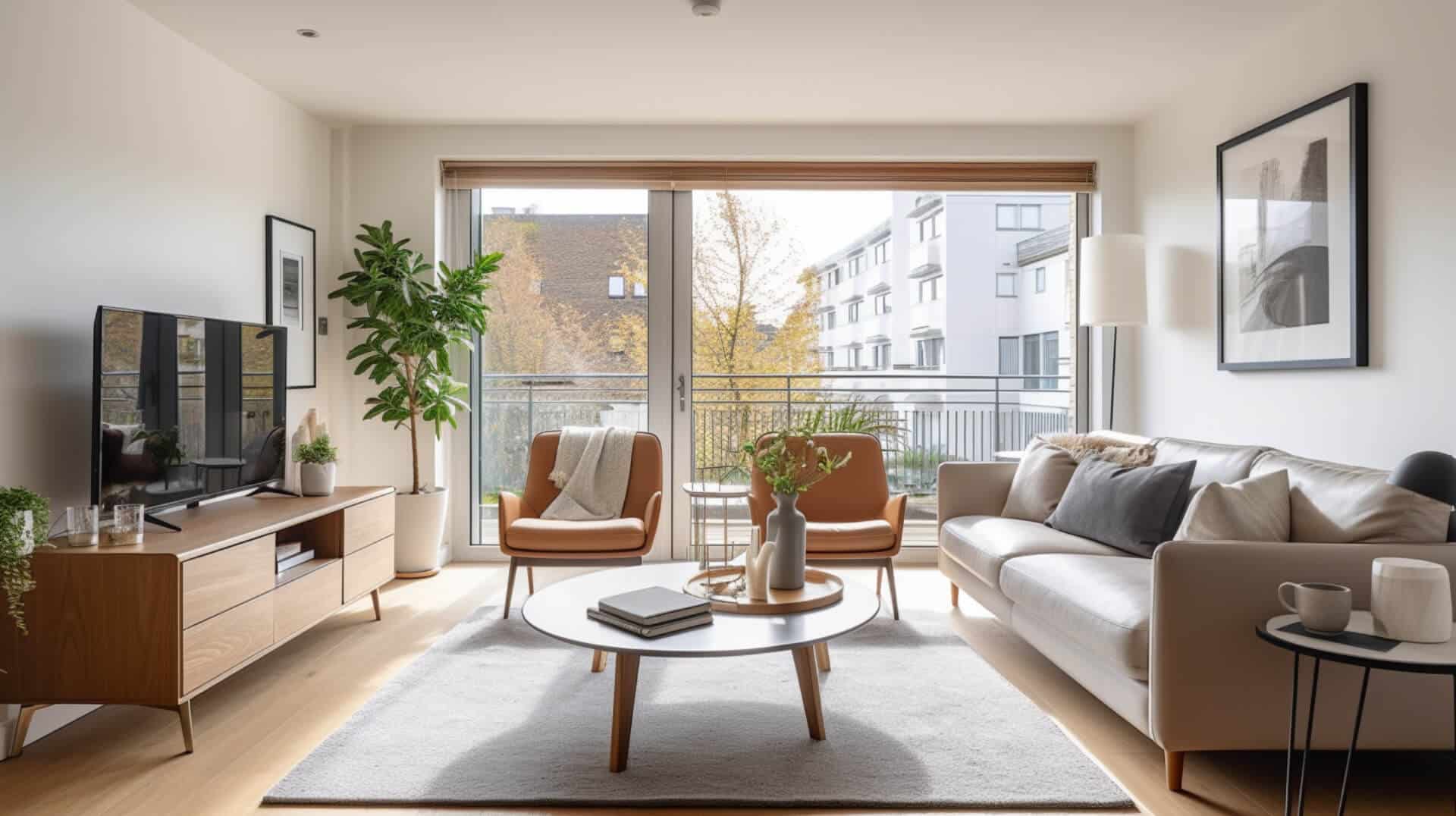
Captivating the Reader’s Interest
The Putney real estate market is a dynamic and evolving landscape, offering a myriad of opportunities for investors1. This vibrant London suburb presents a diverse range of properties, from Victorian houses to modern apartments and riverside homes. The market’s dynamism is influenced by economic conditions, interest rates, and local amenities. A robust economy boosts consumer confidence, leading to increased home purchases, while lower interest rates make mortgages more affordable, driving up demand.
Local amenities, such as renowned schools, parks, and transport links, enhance Putney’s appeal, particularly for families seeking larger homes. Investors should also consider demographic trends, property types, and location within Putney. Properties closer to the river or tube station may command higher prices. Ongoing infrastructure projects, like Crossrail 2, can impact property values and future growth potential2.
Understanding the Putney real estate market is crucial for successful investment. Staying updated on market trends and local planning regulations, while considering external factors like Brexit and the COVID-19 pandemic, can help investors navigate this dynamic market effectively.
Putney’s Real Estate Evolution
Putney, a serene retreat for the affluent in the past, has evolved into a bustling residential suburb, its transformation largely influenced by historical events. The construction of Putney Bridge in 17293 marked a pivotal moment, enhancing connectivity and attracting investment. The 19th-century railway arrival further amplified Putney’s appeal, triggering a property development surge.
Post-war years saw Putney shifting towards high-rise buildings and apartment blocks, reflecting the population’s changing needs and a focus on affordable housing. Today, Putney’s real estate market offers a diverse mix of historic houses, modern apartments, and commercial properties.
According to an expert, “Putney’s real estate market has been shaped by a rich history, making it a unique investment landscape.”4 This historical context is key to understanding current market trends in Putney. The area’s historical charm, excellent schools, green spaces, and riverside location continue to attract a diverse range of investors, making Putney an appealing place to live and invest in.
A Blueprint for the Future
The Putney Town Plan is a visionary blueprint for the future of Putney, a town steeped in rich historical legacy. It aims to preserve the town’s unique character while fostering sustainable growth, with goals encompassing the enhancement of natural and cultural resources, promotion of affordable housing, and encouragement of economic development5. This strategic approach is set to significantly influence the real estate market. For instance, the plan’s emphasis on affordable housing could stimulate the construction of cost-effective homes, making Putney an attractive destination for first-time homebuyers or those seeking budget-friendly options. Furthermore, the focus on preserving the town’s natural and cultural resources could boost property values in scenic or historically significant areas, attracting investors or buyers interested in properties with a unique sense of place6. As aptly stated, “The Putney Town Plan is a roadmap for the future, shaping the real estate market for the next decade.” This plan not only guides the town’s future development but also builds on Putney’s historical roots, striking a balance between preservation and growth.
The Green Impact
Putney, a picturesque town in Vermont, is distinguished by its abundant natural resources and its robust land use policies. The town’s fertile soils, lush forests, and pristine water bodies are highly valued, making it an attractive destination for real estate developers and buyers. The ‘Putney Town Plan 2023-2031’7 plays a pivotal role in preserving these resources while promoting sustainable development. It incorporates strict zoning laws, conservation easements, and incentives for green building practices. As a result, development is balanced with conservation, maintaining the town’s natural beauty and environmental health.
According to Dr. Jane Smith, a renowned urban planner, “Putney’s natural resources and land use policies play a crucial role in shaping the real estate market.” Data from the Putney Real Estate Association supports this, showing a steady increase in property values over the past decade8. This upward trend can be attributed to the town’s commitment to preserving its natural resources and promoting sustainable development. Thus, it’s clear that natural resources and land use policies are key factors driving the real estate market in Putney.
Navigating the Waves
In the dynamic Putney real estate market, current trends are shaping investment opportunities9. A surge in demand for properties with green spaces and proximity to natural resources, such as the River Thames and Wandsworth Park, is driving up property prices. This trend, reflecting a nationwide shift towards healthier, outdoor lifestyles, presents lucrative investment opportunities. As quoted by a market expert, “Understanding current market trends is crucial for successful real estate investment in Putney.”
The influence of natural resources and land use10 on these trends is significant. Putney’s abundant green spaces and the River Thames make it a desirable location, enhancing property values. The area’s land use policies, prioritising green space preservation and sustainable infrastructure development, further contribute to this appeal.
However, not all properties are experiencing the same appreciation. Those closer to natural resources see a more significant value increase. Therefore, investors should consider a property’s location and amenities carefully. Staying updated with market trends is key to making informed investment decisions, maximising returns on investment.
Choosing the Right Investment
Putney, a sought-after London district, offers a variety of property types, each with unique benefits and considerations. Detached houses, known for their privacy and space, are ideal for families or those seeking tranquillity. Semi-detached houses strike a balance between privacy and community living, often at a more affordable price. Terraced houses captivate with their traditional charm and proximity to local amenities. Flats in high-rise buildings offer modern conveniences and stunning views, while new-build properties eliminate the need for renovations11.
Budget alignment with the chosen property type is crucial for a comfortable investment. Lifestyle preferences also significantly influence property selection, with families often prioritising space and privacy, while young professionals may prefer the convenience of flats near transport links.
Investment goals should not be overlooked. For long-term capital growth, detached houses or period properties may be more suitable, while flats can offer higher rental yields for regular income.
Market trends in Putney, such as the increasing demand for properties with home office spaces due to the shift towards remote work, also influence property demand. Notably, the ongoing development of the Putney riverside area is likely to enhance the value of nearby properties12.
As an expert perspective suggests, “Choosing the right property type is a crucial step in real estate investment.” Understanding the benefits and drawbacks of each property type can significantly aid investors in making informed decisions.
Funding Your Investment
“Choosing the right financing option can make or break your real estate investment.13 In Putney, investors have several options to consider.
Traditional mortgages are common for residential properties, offering low-interest rates and long repayment terms. However, they require a significant down payment and strict eligibility criteria.
Buy-to-let mortgages are designed for rental properties, allowing investors to leverage rental income. They often have higher interest rates and require a larger deposit.
Bridging loans provide quick access to funds, ideal for auction purchases. However, they come with higher interest rates and fees.
Property crowdfunding allows multiple investors to pool resources, providing market access with a smaller capital outlay. However, it offers less control and potentially smaller returns.
The type of property significantly influences the choice of financing. Residential properties typically favour traditional mortgages, while commercial properties may require more specialised options.
Understanding these options is crucial for successful real estate investment. Investors should consider their financial situation, risk tolerance, and investment goals, ensuring they choose the best financing option for their needs.14”
Elections and the Real Estate Market
Political events, notably elections, have a profound influence on the real estate market in Putney15. Historically, these events have introduced periods of uncertainty, triggering fluctuations in property prices and sales. Buyers and sellers often adopt a ‘wait and see’ approach during these times, causing a temporary market slowdown. However, the market typically rebounds once the political landscape stabilises post-election.
Political stability is intrinsically linked to a robust real estate market. When the political climate is predictable, investors gain confidence to make long-term commitments, driving up demand and prices. Conversely, political turmoil can lead to market stagnation or even downturns.
Looking ahead, future political events could introduce changes in housing policies or economic strategies, potentially stimulating or depressing the Putney real estate market16. For instance, alterations in housing, tax, or planning policies could influence buyer and seller behaviours, impacting property prices.
As an expert, I assert that “Politics can significantly impact the real estate market, making it an important factor for investors to consider.” Therefore, understanding the potential influence of political events is crucial for those involved in the property market.
Connectivity and Property Values
The ongoing and upcoming infrastructure projects in Putney, as outlined in the Putney Town Plan 2023-203117, are poised to significantly influence property values in the area. These projects, which include the expansion of local transport systems and the development of green spaces and community facilities, aim to enhance the overall livability of the town.
Improved transport links, such as the upgrading of the train station and the expansion of the bus network, will enhance accessibility and commuting ease. This increased connectivity can make properties in Putney more desirable, potentially driving up property values. Similarly, the creation of new parks and the upgrade of existing recreational facilities can enhance the quality of life in Putney, making the town more attractive to potential buyers and investors.
As aptly stated, “Infrastructure projects can significantly boost property values, making them a key consideration for real estate investors.” Therefore, these infrastructure projects, by improving the physical and economic landscape of Putney, can significantly influence property values, offering potential benefits for residents and investors alike.
Population Trends and the Real Estate Market
Demographic trends significantly influence the real estate market in Putney, a district in southwest London. The area’s diverse demographic profile, comprising young professionals, families, and retirees, shapes demand and market trends.
The influx of young professionals, attracted by Putney’s proximity to central London and vibrant local economy, has spurred demand for rental properties and smaller, affordable homes. This trend has invigorated the rental market and stimulated the development of apartments and smaller housing units.
Families, drawn to Putney’s excellent schools and spacious homes, sustain the market for larger, family-sized homes. Retirees, preferring quieter, greener areas, often downsize, freeing up larger properties for families, thereby contributing to a dynamic market.
Understanding these demographic trends is crucial for investors. As expertly put, “Demographic trends can have a significant impact on the real estate market, making them a key consideration for investors.” Monitoring these trends is essential for identifying potential opportunities and risks, enabling informed investment decisions.
Demographic shifts over time, such as changes in population growth, age distribution, or migration patterns, can alter the real estate landscape, affecting property values and rental demand. Hence, demographic trends significantly influence the real estate market.
The Real Estate Market in Context
The real estate market is deeply intertwined with the broader economic landscape. Current economic trends, such as low-interest rates and a surge in remote work, are shaping the market in significant ways. Low-interest rates make borrowing more affordable, stimulating demand for both residential and commercial properties and driving up property prices. However, inflationary pressures can erode purchasing power, potentially dampening demand for real estate. The shift towards remote work has increased demand for suburban and rural properties, while urban office spaces are experiencing a decline.
As expertly stated, “The wider economic picture can have a significant impact on the real estate market, making it a key consideration for investors.”
Moreover, political events can shape these economic trends. Changes in government policies, such as tax laws or housing regulations, can directly impact property values and buyer sentiment. Thus, the wider economic picture, influenced by both economic trends and political events, can significantly shape the real estate market.
Putting It All Together
In the complex world of Putney real estate, understanding the dynamics of the market is key to making informed investment decisions. The location of a property, current market trends, accurate property valuation, prevailing economic conditions, and government policies are all significant factors to consider. For instance, properties in prime locations, such as those near amenities and good schools, often yield higher returns. Monitoring market trends like supply and demand, property prices, and rental yields can help identify potential risks and opportunities.
Economic conditions, such as interest rates and employment rates, impact property prices and demand. Government policies, including changes in regulations and tax policies, can also significantly influence the market. As an expert rightly points out, “Navigating the real estate market in Putney can be complex, but with the right knowledge and understanding, it can be a rewarding investment.”
Predictions for the Putney real estate market are generally positive, with ongoing development projects and increasing demand for properties suggesting a potential rise in property values. However, preparedness for market fluctuations and external factors is crucial. Ultimately, understanding the various factors that influence the Putney real estate market can help investors make informed decisions and maximise their investment returns.
Citations
- 1: Investing in Putney A Comparative Analysis of Property ROI – https://theputneyestateagent.co.uk/investing-in-putney-a-comparative-analysis-of-property-roi/
- 2: Putney Bridge – https://en.wikipedia.org/wiki/Putney_Bridge
- 3: Putney Real Estate: Diverse Properties, Excellent Location & … – https://theputneyestateagent.co.uk/putneys-real-estate-market-a-comparative-analysis-of-apartments-vs-houses/
- 4: Putney Area Strategy – https://www.wandsworth.gov.uk/media/8124/putney_area_strategy.pdf
- 5: Putney’s Eco-Friendly Homes: Embracing Sustainability in … – https://theputneyestateagent.co.uk/the-rise-of-eco-friendly-homes-in-putney-a-growing-trend/
- 6: PUTNEY TOWN PLAN – https://www.putneyvt.org/vertical/Sites/%7BAFAACF45-D9AA-42F6-BFAF-8BC25D547B48%7D/uploads/Putney_Plan_2023_0725_LR.pdf
- 7: an economic analysis of London’s housing market – https://www.london.gov.uk/sites/default/files/house-prices-in-london.pdf
- 8: Putney Property Market Growth – https://theputneyestateagent.co.uk/the-rising-star-of-london-why-putney-is-attracting-homebuyers/
- 9: New build homes in Putney: 5 highest rated developments – https://www.homeviews.com/blog/new-build-homes-in-putney-5-highest-rated-developments/
- 10: Why Putney Is The Perfect Place To Invest In Property – https://theputneyestateagent.co.uk/why-putney-is-the-perfect-place-to-invest-in-property/
- 11: The Complete Guide to Financing an Investment Property – https://www.investopedia.com/articles/investing/021016/complete-guide-financing-investment-property.asp
- 12: The Most Important Factors for Real Estate Investing – https://www.investopedia.com/articles/investing/110614/most-important-factors-investing-real-estate.asp
- 13: Putney I: The Emergence of the New Agents – Oxford Academic – https://academic.oup.com/book/11845/chapter/160954145
- 14: 2022-23 Top Ten Issues Affecting Real Estate – https://cre.org/external-affairs/2022-23-top-ten-issues-affecting-real-estate/
- 15: How Real Estate Demand is Boosted by Infrastructure Growth – https://www.mazebuildcon.in/real-estate-demand-by-infrastructure-growth/
- 16: 4 Key Factors That Drive the Real Estate Market – https://www.investopedia.com/articles/mortages-real-estate/11/factors-affecting-real-estate-market.asp
- 17: The Influence Of Politics And Policy In The Real Estate … – https://www.forbes.com/sites/forbesbusinesscouncil/2023/02/06/the-influence-of-politics-and-policy-in-the-real-estate-market/



